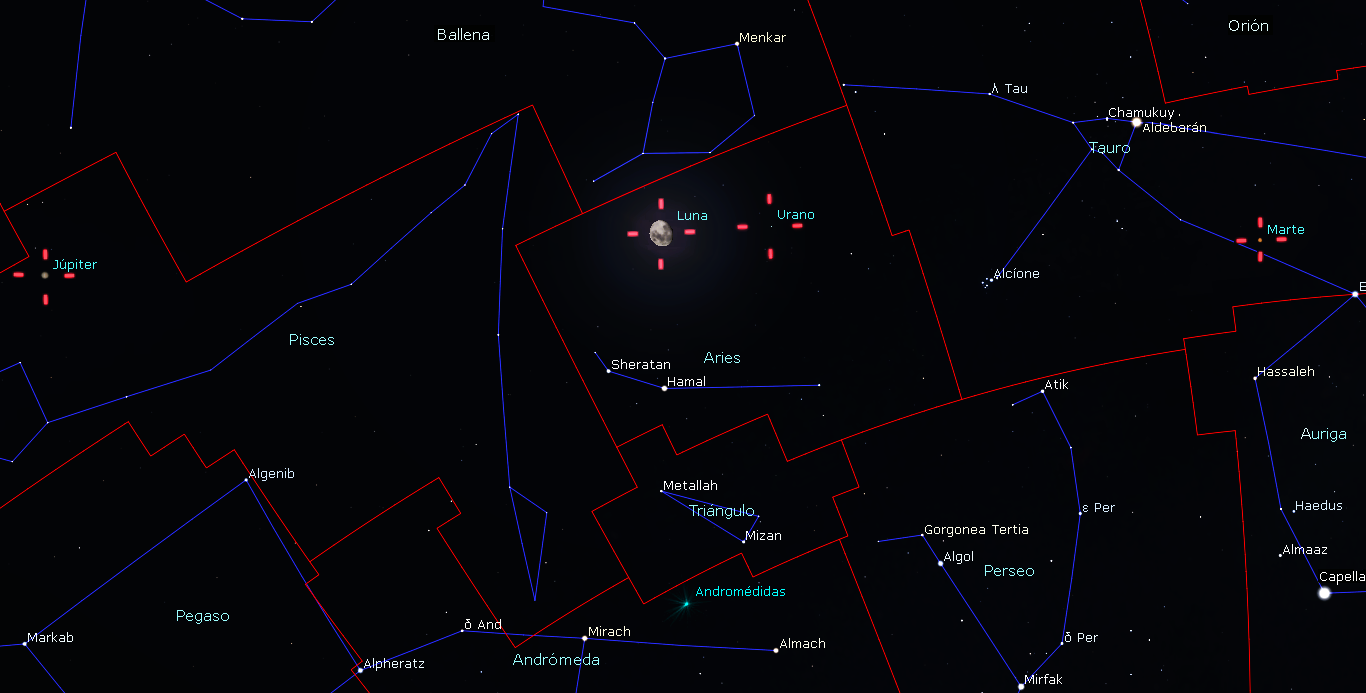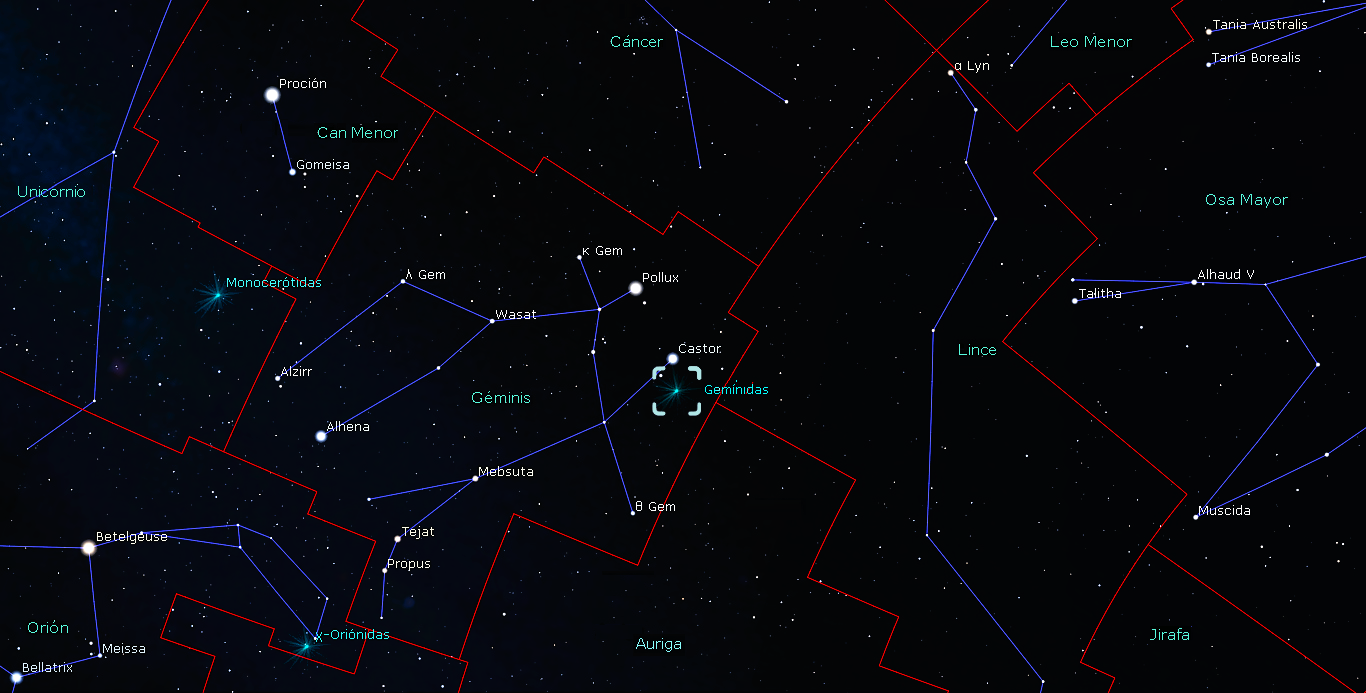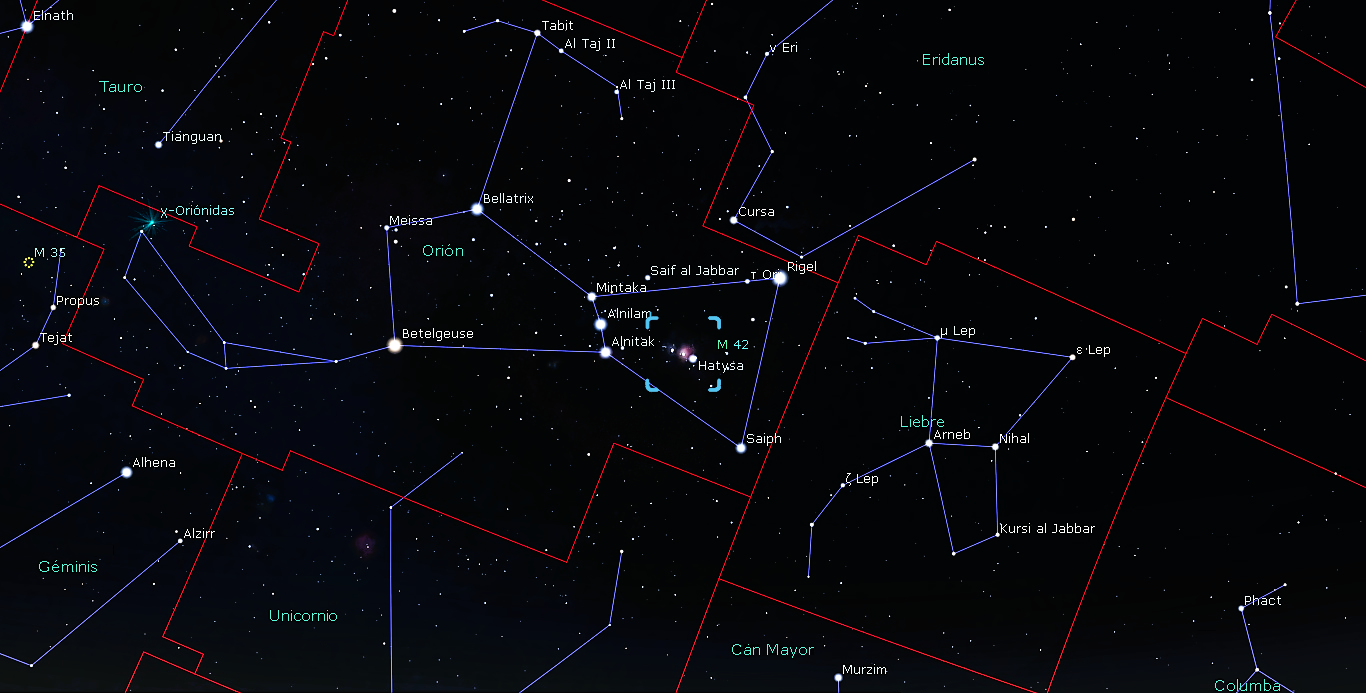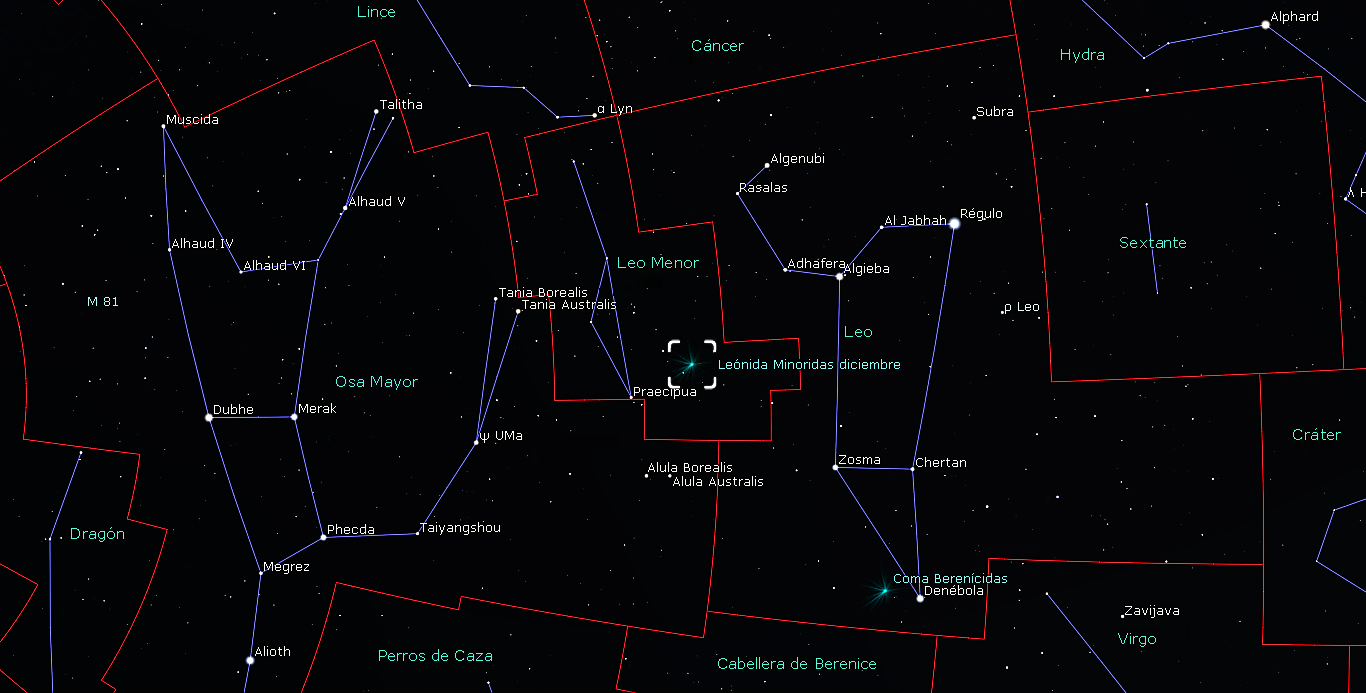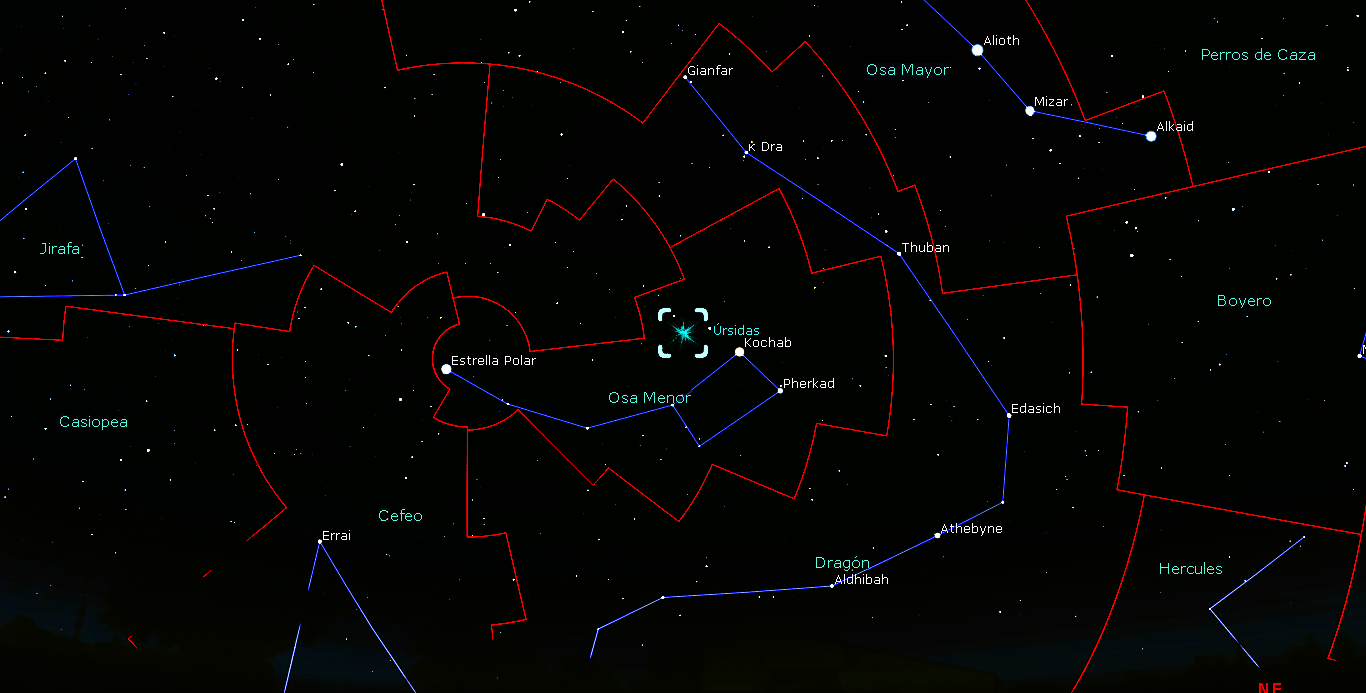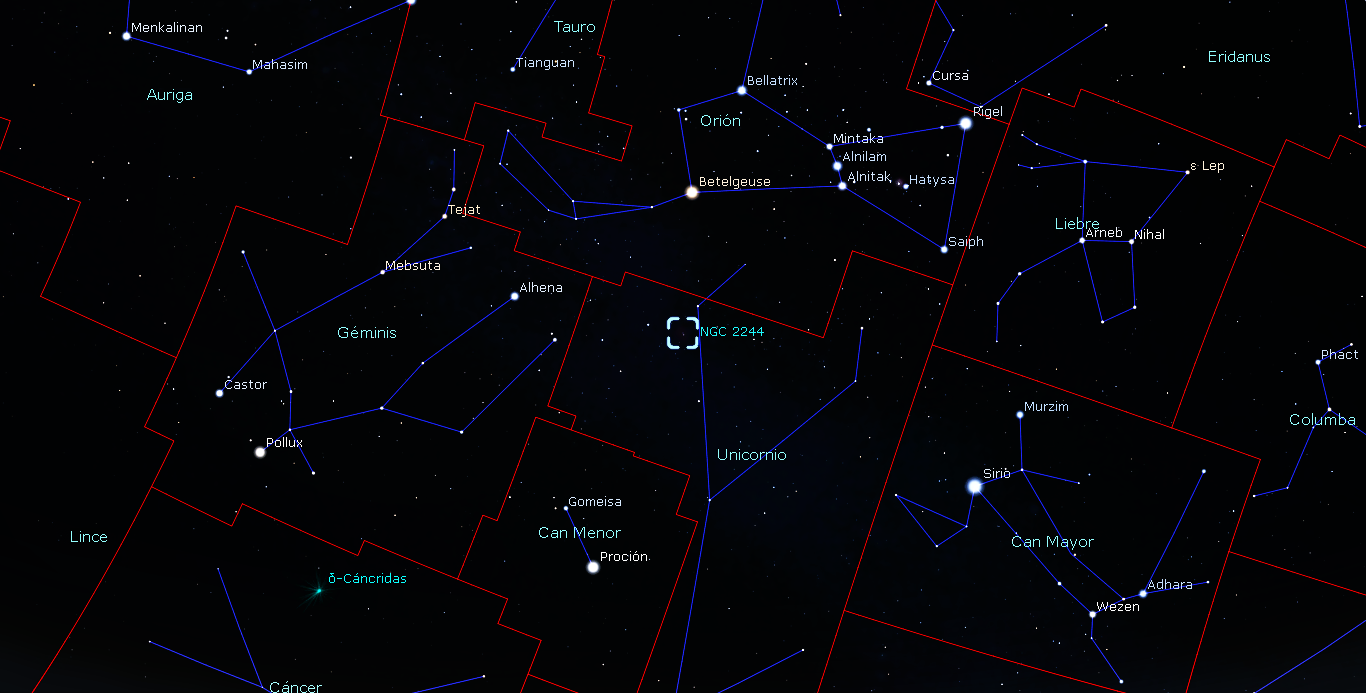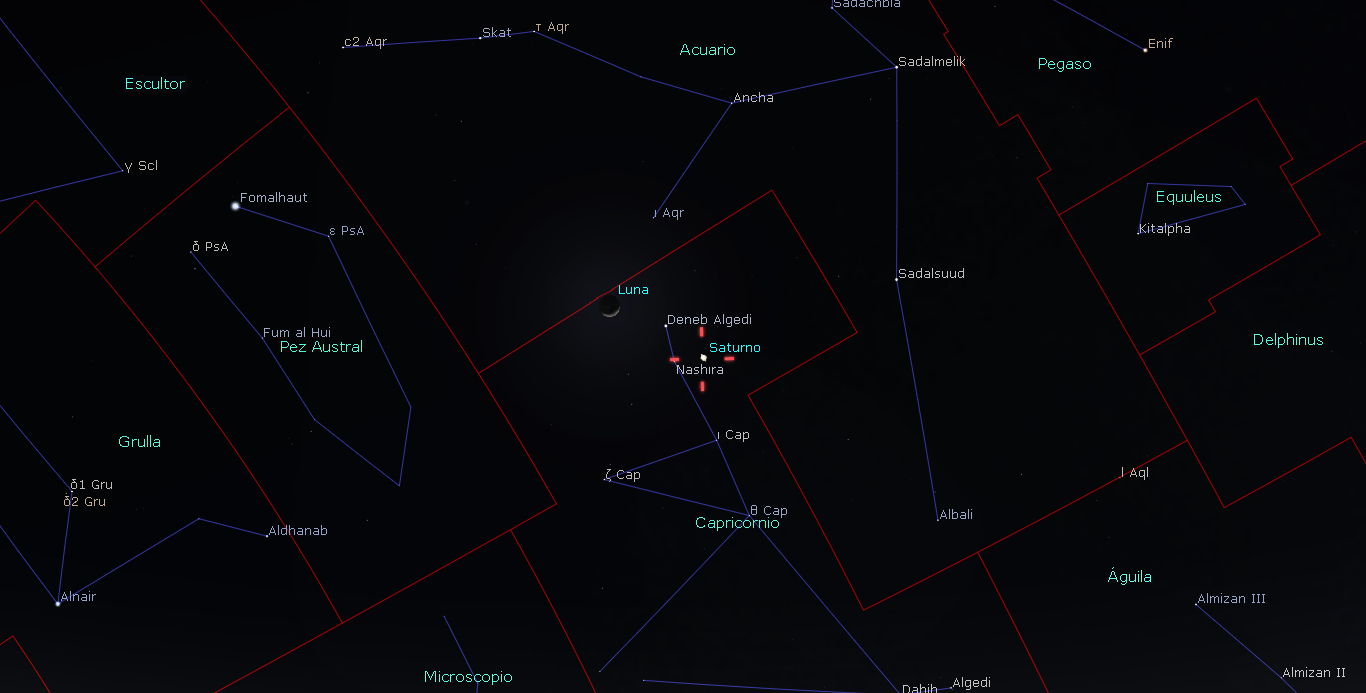Astronomical events of the month of December 2022
We are ending another year of astronomical experiences, and December still offers us the opportunity to add some very attractive celestial events. We will remember how we arrived at the image of "A Pale Blue Dot"; we will have the entry of winter indicated by the December solstice. We will enjoy some planetary close-ups with the Moon; and although we will miss the Phoenicid and Puppid-Velid meteor showers, we will enjoy the beauty of the Geminids, the Leonid Minorids and the Ursids. Likewise, we will be able to delight ourselves with the Orion Nebulae and the Rosetta (NGC 2244 cluster), consider it a challenge; and, of course, as always, we will have the phases of the Moon.
A pale blue dot
75 years ago, in 1947, the era of space photography was born, obtaining the first photograph of our planet from space, achieved aboard a V-2 ballistic missile confiscated from the Germans. By 1959, the first color photograph of Earth was taken and in 1961 Stepanovich Titov, aboard Vostok 2, was the first astronaut to capture images of our planet. An emblematic photograph of Earth is the one known as "Earthrise" or "Earthrise" captured by the crew of Apollo 8 in 1968. Another iconic image of our planet is "The Blue Marble", "La Canica Azul", which shows us the majesty of the first complete view of the Earth, taken on December 7, 1972 by the crew of Apollo 17 (figure 1). A photograph that inspired the astronomer and popularizer Carl Sagan (who, by the way, died on December 20, 1996) to write one of his books "A pale blue dot" or "A pale blue dot", a photograph that shows the Earth at 6 billion kilometers, taken from NASA's Voyager 1 probe before leaving the solar system. Either way, these photographs remind us how lucky we are to live on a planet like Earth, within the vastness of the Universe.
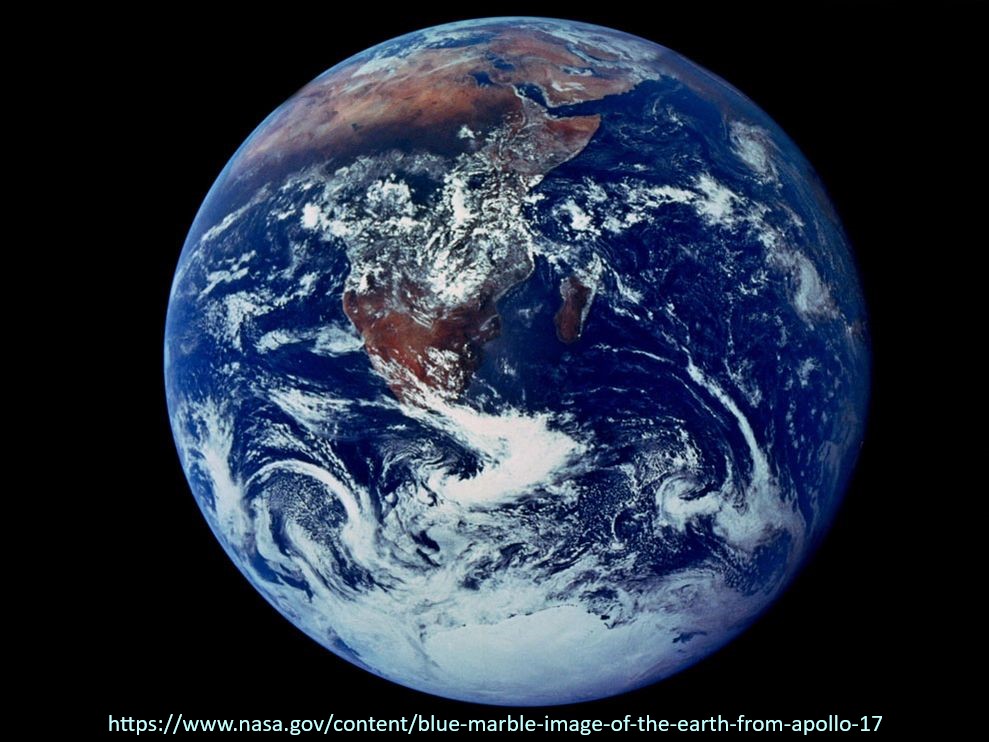
"The Sun Stands Still", winter solstice
In previous decades, the changes in the seasons of the year were well defined for certain regions of the terrestrial hemispheres, but today, with "climate change", it is much more complex to clearly observe the meteorological variations. Regardless of the internal conditions of the planet, the seasons of the year continue to be marked by the inclination of the Earth's axis of rotation, about 23.5 degrees, with respect to the plane of the Ecliptic and to a lesser extent, its translation movement. This year, the winter solstice will take place on December 21 at 3:48 p.m. Central Mexico time (9:48 p.m. Universal Time). When the winter solstice occurs, the northern hemisphere experiences the longest night of the year and the shortest day, and the exact opposite occurs for the southern hemisphere, that is, summer begins with long days and short nights.
Walk of the Moon for some planets
From December 1 to 8, the Moon will be moving between some planets, starting with its visit to Jupiter, then to Uranus and ending its journey passing near Mars. At sunset of the first day we have the conjunction of the Moon and Jupiter, when the Moon passes only 2° 30' south of the gas giant, which will be close to reaching its maximum brightness, this in the direction of the constellation of Pisces. From the early hours and until 11:59 p.m. on December 5, the Moon will approach Uranus, in the direction of the constellation Aries, and will conclude its journey on the 8th, when the Moon is in conjunction with Mars, passing at 0° 32' north of the red planet, in the direction of the constellation Taurus. The apparent route taken by the Moon, in these approximations, will be from west to east, providing the opportunity to enjoy them with the naked eye. A particularly attractive view will be of Jupiter and its Galilean moons, as well as the view of the incredible red planet, but for this you will need binoculars or a small telescope.
By mid-December, copious “rain” is forecast
The Geminids meteor shower is one of the most abundant of the year. The Geminids are active between December 4 and December 17, with their maximum in the early morning of December 14. The maximum observable rate will be 120 meteors per hour. The origin of the rain is the asteroid (3200) Phaethon, which is 5.8 kilometers wide and lights up as it approaches the Sun, generating the sublimation of its materials, which most likely constitutes the fleeting. It should be noted that, in this case, it is an asteroid and not a comet that causes this rain. The best time to "hunt" meteors will be during the early morning and evening of December 14. Despite the brightness of the Moon, perhaps some "shooting stars" can be seen due to the number of them, in the direction of the constellation of Gemini, towards the northeastern part of the celestial sphere.
The spectacular Orion Nebula, visible to the naked eye
For a few months it will be possible to observe the Great Orion Nebula, located in the constellation of the same name and which has been admired by all the ancient civilizations of the world. As an example, we can say that some sources cite that for the ancient Mayans, the Orion region represented a turtle with three stars in its shell, where the nebula, which they called Xibalbá, was the furnace for the creation of life; On the other hand, for the Mexicas it was a mamahuaztli, or the instrument to obtain fire by friction, or as yelimiqui, the plow, an instrument used to prepare the land for planting. For the Greeks he was a hunter of great feats, killed by a scorpion and both immortalized in the firmament. The Frenchman Nicolas-Claude Fabri de Peires discovered the Orion Nebula in 1610 and it was rediscovered in 1611 by the Jesuit astronomer Johann Baptist Cysatus of Lucerne; the first drawing of the Orion Nebula was created by Giovanni Batista Hodierna. Finally, Christian Huygens ratified the discovery in 1656 and Charles Messier added it to his catalog as M42, in 1679. The Orion Nebula is a bright nebula, made up of gas, dust and hundreds of stars, including those that make up the famous Trapezium of Orion, about 1,300 light years from us, with a diameter of about 30 light years, its brilliance being such that it is perceptible to the naked eye, under reasonable sky conditions, in the direction of Orion's sword, occupying the middle position of the objects that make it up.
A fierce meteor shower
The Leonid Minorids will present activity between December 5, 2022 and February 4, 2023, with their maximum on December 20. The maximum observable rate will be 5 meteors per hour. The radiant is in the direction of the constellation León Minor. The object that gives rise to this rain has not yet been identified, whose visibility will be better in the early morning of December 20, towards the northeastern part of the celestial sphere.
Closing of the “rainy season” 2022
The Ursids meteor shower will be active between December 17 and 26, with its maximum on December 22. The maximum observable rate will be 10 meteors per hour. The radiant is in the direction of the constellation Ursa Minor. Comet 8P/Tuttle is responsible for this shower. It will be visible at dawn on December 22, towards the northern part of the celestial sphere. To observe a meteor shower, no additional optical instrument is required, just keep your eyes alert towards the indicated region of the sky and patience, above all a lot of patience.
A heavenly rose
The emission nebula known as the Rosetta, whose morphology reminds us of a rose, with petals and pistils: the great emission nebula would be the petals and the central region formed by the open cluster NGC 2244 would be the pistils. The Rosetta is located in the constellation of Monoceros (the Unicorn). It is believed to be about 5,000 light-years distant and about 100 light-years across, containing a mass of 10,000 solar masses. It has an apparent magnitude of 9, which makes it somewhat difficult to observe. The bright stars of NGC 2244 formed inside the nebula just about 4 million years ago, so its strong winds and radiation ionize the hydrogen in the nebula, making it shine, which is why the Rosetta Nebula could be said to have formed. part of the parent cloud of cluster NGC 2244. This cluster is made up of about 50 luminous stars, reaching a magnitude of 4.8 making it visible in extremely dark skies or through binoculars or a small telescope.
Ending the year of astronomical events
To end this year's astronomical events, we will have the conjunction of the Moon and Saturn, that is, both celestial bodies will be sharing their Right Ascension (one of their coordinates). Our satellite will be passing at 4° 00' south of Saturn, in the direction of the constellation Capricorn. It is worth mentioning that to appreciate the Moon-Saturn arrangement, no support instrument is required, since it will be visible in any way. However, if you want to be amazed by the fabulous view of Saturn's rings, binoculars or a small telescope will suffice.
Phases of the Moon (Central Mexico time).
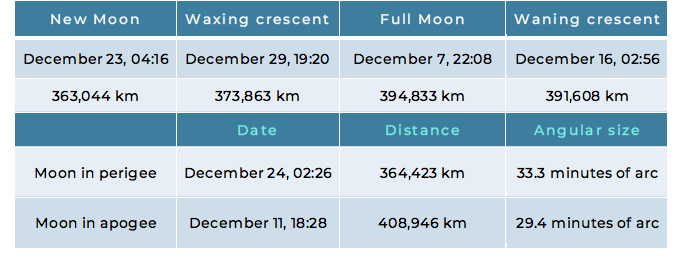
Watch the video with the events of December: https://youtu.be/fotKopFdclU
Contacts:
Dr. Agustín Márquez Limón (amarquez@inaoep.mx), Coordinación de Astrofísica-INAOE
Dr. Vicente Hernández Hernández (planetariodecozumel@gmail.com), Red de Planetarios del Estado de Quintana Roo
Dr. Raúl Mújica García, (rmujica@inaoep.mx), Coordinación de Astrofísica-INAOE y Noche de las Estrellas
Luis Enrique Erro # 1, Tonantzintla, Puebla, México, Código Postal 72840, Tel: (222) 266.31.00, difusion@inaoep.mx
This work is licensed under a Creative Commons Attribution-NonCommercial-NoDerivs 2.5 Mexico License.


